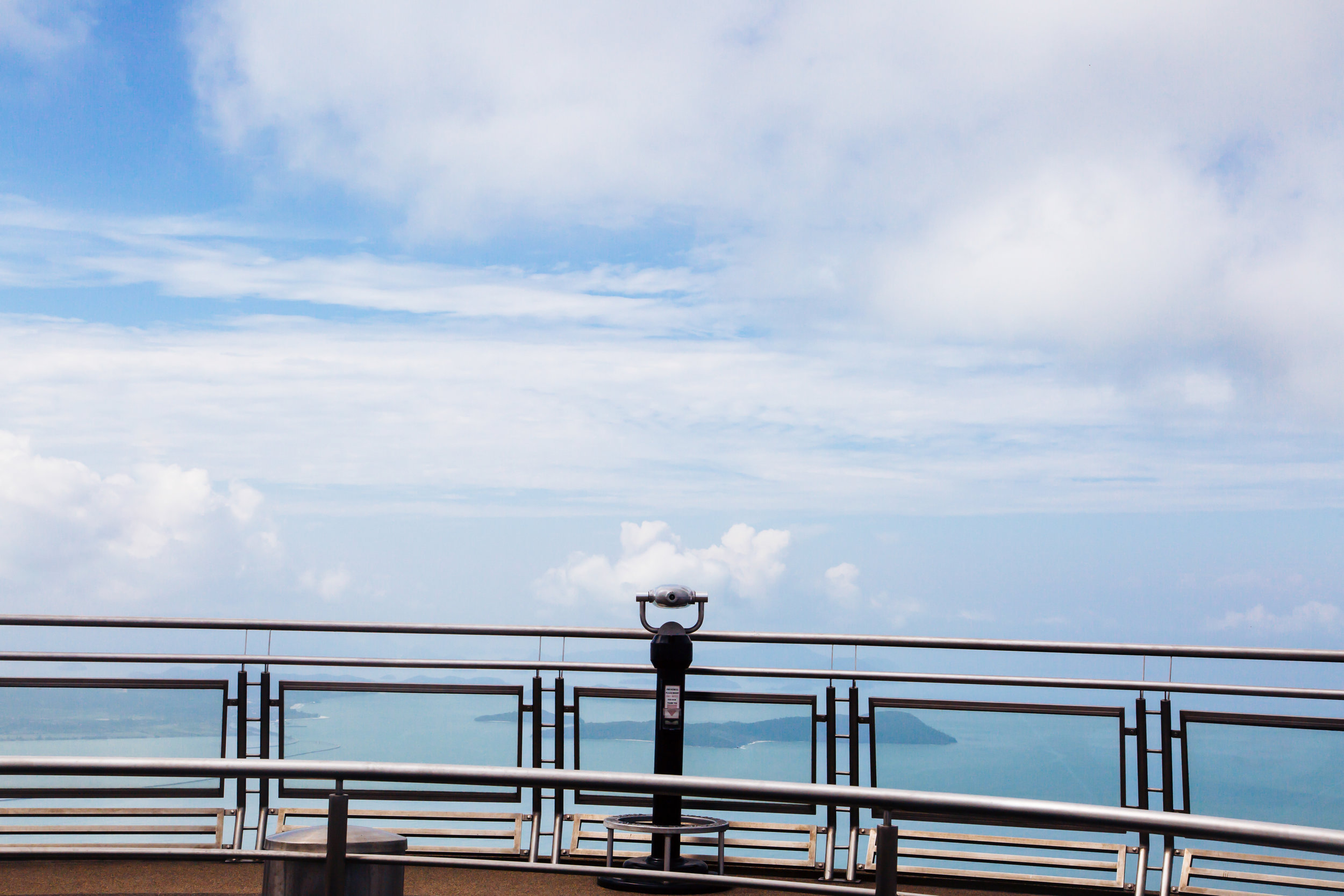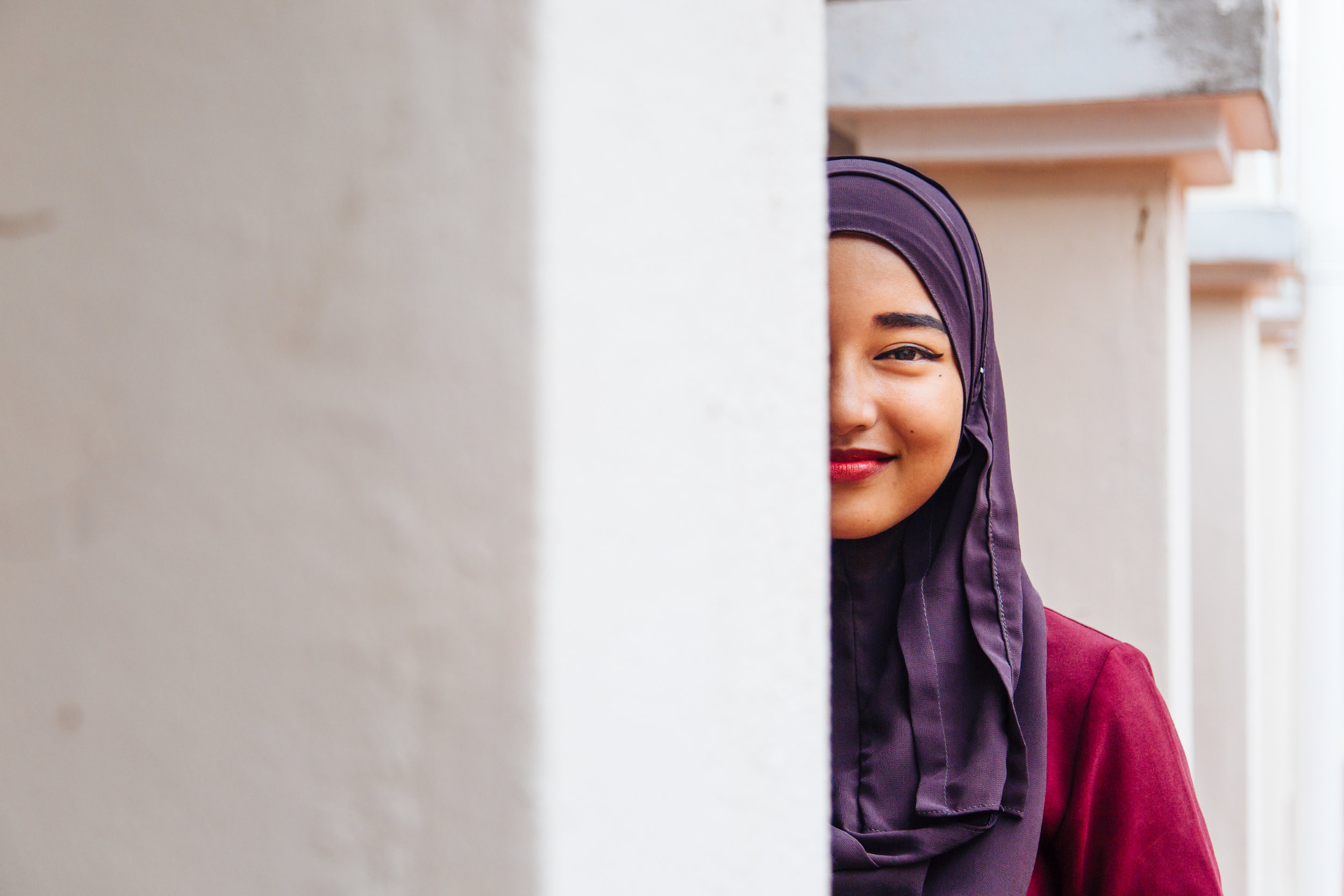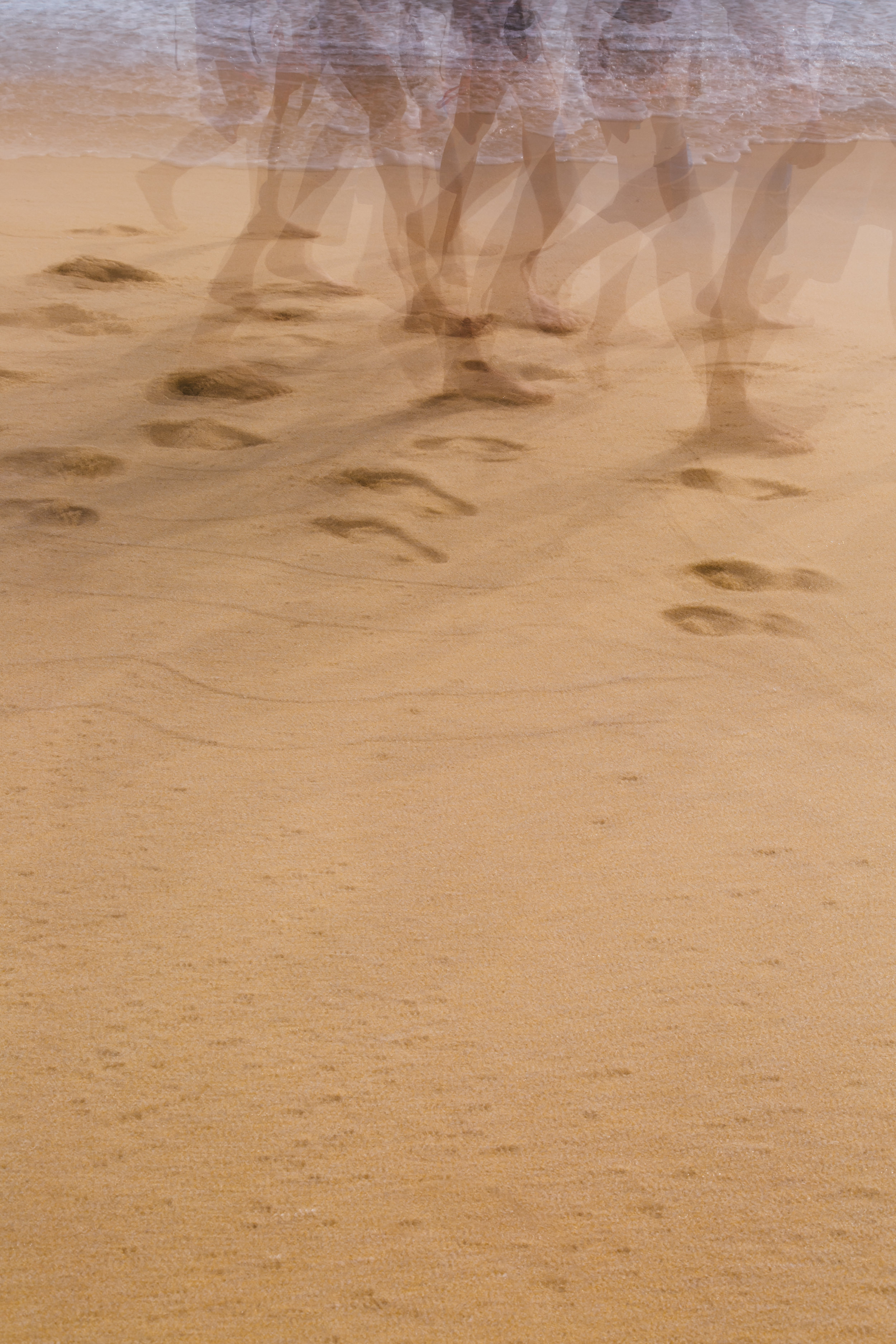Jewel of Malaysia
The road straightens and I press the motorbike's accelerator a bit harder to refresh my body. a few morning rays have found their way through the full cumulonimbus clouds and, although it is early, toast all they touch. The sky debates, as it often does, whether to let loose with a torrent or to allow the terrain to bask in the morning light. As the straightaway comes to an end, I slow for zigzag switchbacks and a family of monkeys darting across the freshly paved road.
I climb higher through the rainforest. The ceiling of green gradually turns back to royal blue and the mountainous road comes to an abrupt end. Taking a lungful of air, I hop off my modest 110cc motorbike and carefully inch closer to the sheer cliff in front of me. I peer out at the Strait of Malacca, savoring the panorama from the northern tip of Langkawi, the cluster of 99 islands in the northwest state of Kedah, just 30 kilometers from mainland Malaysia. Although Pulau Langkawi, the biggest island in the archipelago, is just an hour's flight from bustling Kuala Lumpur, the capital seems light years away. Just 6 kilometers from Thailand and counting residents of Malay, Chinese, Indian and Thai descent, the island is one of the most culturally diverse areas in all of Asia.
The sky's debate ends and goliath clouds continue to form. Rain or shine, I am determined to spend my first day in Langkawi exploring the massive Machinchang Cambrian Geoforest Park. With geological formations dating back to the first period of the Paleozoic era, the thickly forested land is unfathomably ancient. According to locals, Machinchang refers to an ancient Malaysian giant, Mat Chincang, who during a brawl with his rival, Mat Raya, is said to have created the peculiarly chopped peaks seen today.
The peak of Gunung Machinchang is gained via SkyCab, which boasts the steepest cable climb in the world. As one ascends into the clouds, the temperature drops slightly and the gondola-style cabs teeter perilously in the wind. But the vertigo produced by the ride is instantly forgotten with the awe-inspiring view from the peak. At the pinnacle is the SkyBridge, a 125-meter single-support bridge that leads pedestrians over a forested abyss.
I head off to Telaga Tujuh, a series of cascades flowing down from Mount Machinchang. Its name, meaning Seven Wells, refers to pools fed by various streams. Due to Langkawi's tropical heat and humidity, ascending the 630 steps to the wells is no easy task. But my efforts are rewarded with a mysterious plateau dotted with freshwater pools, each colored by centuries of mineral deposits. Before beginning the arduous journey back down, I cool off with a plunge into the deepest pool.
Post-dip, I'm back on my scooter and riding rural back roads southeast. Moving from forest to paddies, I find Coconut Shake, a ramshackle oasis that can hardly be missed because of its wooden enclosure holding thousands of coconuts. Izham, the gentleman at the helm, hacks away at the coconuts, opening each with such force that the water sprays him with every swing of his machete. He expertly scrapes an average of 300 coconuts a day and serves them "original" or "on ice" to passing cyclists. I order the original and Izham puts his machete into another cocunet, dousing me before handing me a straw and a 2-pound tropical delight.
The next morning I drag east, stopping to pick up a modest breakfast. I park at Telaga Harbor Marina, a colorful port housing seafood eateries, a shopping complex, small fishing boats and yachts from around the world. I find a quiet spot along the shore and perch on a massive trunk of driftwood lapped by calm waves. Affter eating, I walk the marina and discover a stoic lighthouse. It is here that I meet Shila, a young girl who works nearby at a Chinese-Malay seafood restaurant. we exchange pleasantries and she urges me to vist Langkawi's many mosques as well as Lami Padi, an eco-museum dedicated to rice production.
Following Shila's advice, I move along to Lami Padi, a lad reserve showcasing the rice-planting traditions of Langkawi. The state of Kedah, after all, is known as the "rice bowl of Malaysia." A small air-conditioned museum details the idiosyncrasies of Malaysian rice production.
Moments from Lami Padi is Pantai Cenang, the busiest beach town in Langkawi. For many, a trip to Langkawi can begin and end here. Darting down a cluttered alley, I get my first taste of the beach life Langkawi is becoming famous for. A couple plays paddle board, families lazily walk the golden shore, and sunbathers reapply coats of SPF 50. In the distance, Jet Ski drivers fling their passengers into the dark blue waters, and nearby, small children try to body-surf in the angle-lapping waves. I plop down on one of the oversized beach cushions at Kalut Bar and Cafe, where I sip the bohemian joint's cold draft beer and take in Pantai Cenang's youthful atmosphere for an hour.
With evening upon me I complete my stroll along Pantai Cenang. As I head back to the main road, a colorful parasail catches my eye. Instead of swimming around the rocky outcropping that upholds The Cliff, a luxurious seafood fusion restaurant, I walk back to the main road and make my way to Pantai Tengah, a beach just a stone's throw south. Immediately I spot the staff of Cenang Baru Jetski, an adventure company operating from the tip of Pantai Tengah.
As sunset approaches, the line for parasailing grows longer. I don't mind; I am just as interested in watching the teams of Malay men pull young tourists by speedboat into the air and then precariously climb (untethered) into the colorful parachutelike sails for five-minute rides into the sea and back. I sit with Arhan, who has already fulfilled his daily quota of flights, and am amazed to learn that in peak season, each "flyer" can take up to 70 journeys into the sky.
My last day begins by following Bukit Malut Road, a coastal byway hugging the southeastern shoreline that allows for a slow pace and views of Pulau Dayang Bunting, the second-largest island in the chain. I finally make it to Kuah, Langkawi's largest and most populous town. A Thai spot appropriately names Thai House Kuah calls to me. I order vegetarian spring rolls and a karabu mango salad. But my mind is on the main course of pet pat chicken, a fiery dish known to warm the belly long after the plate is clean.
As I finish my meal, my guide for the day arrives. Mohammed has a gentle demeanor and a humble stance. Only 26, Mohammed has spent seven years living and working in Kilim for Flora Fauna, his father's eco-tourism business. Having just seen Machinchang, it is hard to imagine a more alluring natural environment, But Mohammed promises me otherwise.
As we ride toward the Kilim River, Mohammed gives me an overview of the natural environment we will encounter during our afternoon boat journey; The Kilim Geoforest Park, home to the region's mangrove eco-system, magnificent coastal beaches, mud flats and caves. But, Mohammed adds, within the reserve there is always a good chance of meeting macaque monkeys, eagles, monitor lizards and otters.
Our first stop is Gua Kelewar, a limestone cave commandeered by thousands of roosting bats. We lower our voices as we enter out of respect for the nocturnal creatures. Minding the slick guano, we carefully make our way out the opposite end to the mangrove forest, perfectly exposed during low tide. I lean in for a closer look and Mohammed swiftly pulls me back. Without any sign of fear, my young guide points to the limb closest to my face. "Mangrove pit viper," he whispers in my ear. "Just a baby." Sure enough, there, perfectly camouflaged by its orange-and-brown patterns, is the venomous serpent.
Next we meet Paksu Bakar, a fish-farm owner and marine expert living and working atop his floating enterprise. Paksu, a conservationist by nature, is an educator at heart. While his line of fish farms has sustained seafood restaurants catering to tourists, Paksu is especially keen to acquaint his guests with the aquatic species of Kilim. Among others, Paksu giddily shows us stingrays and the archer fish, a creature known for its habit of preying on insects and small animals on low-hanging waterside foliage by shooting them down with a well-aimed spurt of water from its specialized mount.
With Paksu waving goodbye, our boat driver, Abu, and his grandson Ani (age 5) sluggishly navigate our small boat down the Kilim River so we can inspect the mangrove sprawl, observe brown eagles, and pause as cheeky monkeys swim across thin backwater channels. At Mohammed;s request, Abu leads us into the open sea. Finally, around the tip of Langkawi, we set eyes n mainland Thailand.
I thank Mohammed for such a spectacular tour of Kilim. He gives me a polite bow. "My job is a trade-off," he says. "I am allowed to show and teach people about the natural environment that only exists in Langkawi. In return, I get to know a little bit about the world."
I want my last meal on Langkawi to be as local as possible. It is Ramadan, the holy month dedicated to fasting, prayer and introspection. Nearly 80 percent of Langkawi's residents are Muslim, and most of the island's local Malay restaurants are closed until sundown. Yet iftar, the meal eaten to break the fast on each night of Ramadan, is easily found at Bazaar Ramadan Kuah, a market dedicated to local cuisine. Entire families on motorbikes, elderly grandmothers and young men all flock to the smoke billowing out from under white spired tents.
Walking along the aisles of fan-blown, chargrilled chicken and fresh fruit, it doesn't take long to make a friend. I sit with Mahadzir, 47, who has served barbequed chicken at Bazaar Ramadan Kuah for six years now. When I ask about the Bazaar Ramadan, Mahadzir comes alive. "People are so happy during this month, and even happier to be at the bazaar. In an hour or so they will feast." Mahadzir flips a large chicken wing into the air and slyly catches it in a brown paper bag. "A Ramadan gift," he says as he hands it to me with a warming smile. Normally I would open the bag and immediately sample the gift. But eating the hawker fare on-site at any of the Bazaar Ramadan is strictly forbidden.
Strolling out of the market, my eyes are drawn to a local favorite dish; Nasi Ayam, Malaysia's version of chicken rice, is comprised of aromatic cooked rice, fried honey-glazed chicken and a zesty sauce (garlic, sugar, chilies, and lime). I purchase a portion and make my way out of the market.
For the last time I press down on the accelerator. With just an hour before sunset i race back to the southwest coast of Langkawi. The road seems to carry me back in time; To my right, green hillsides of giant ferns morph into rice fields that look like they were transplanted from central Vietnam, and with each kilometer I feel more relaxed. Like my motorbike drifting in and out of traffic, my mind wanders and reflects on my brief trip. What is it, exactly, that makes Langkawi the Jewel of Kedah?
I make it to a pier just in time to catch the last rays of sunshine. Savoring Mahadzir's chicken wing, I look north, past the crystal waters of Pantai Cenang and the paragliders of Pantai Tengah, toward Mount Machinchang standing proudly in the distance. Langkawi's willingness to ignore time and leave natural rhythms undisturbed is what defines this Jewel of Kedah, its land and people.
Originally published in Ritz Carlton Magazine (Fall 2017)





















